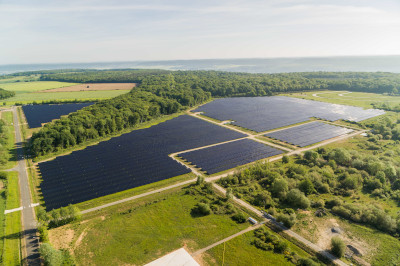Services
Technologies
Promouvoir un avenir énergétique propre grâce à des technologies renouvelables de pointe.
Voir toutes les technologiesRessources
Parcourez nos dernières ressources, notamment les mises à jour de l'entreprise, les témoignages de clients, les informations sur le secteur et les rapports de recherche.
Voir toutes les ressourcesCarrieres
Rejoignez une équipe collaborative de personnes passionnées qui s'engagent dans un travail qui a du sens.
CarrieresÀ propos de RES
Nous vivons notre mission, nous mettons en avant les personnes qui la réalisent et nous célébrons les transformations qui changent la façon dont le monde produit et consomme l'énergie.
Voir à propos de nousEmplacements et bureaux
Tout comme notre entreprise, nous sommes véritablement mondiaux – mais fièrement locaux. Trouvez les coordonnées et l’emplacement de chaque bureau RES.
Nous contacter
A high level of availability of key solar farm components is essential for good financial performance. When issues occur, they are readily apparent through a reduction in site production. Using a systematic approach through plant reliability management enables issues to be tackled on a long-term basis to ensure greater availability.
Availability is a key issue, but energy efficiency of components is often ignored and this is where data comes into its own to lead optimisation. Not every component can be optimised – transformers are generally fixed but the efficiency of the inverters and the DC network can degrade. This is where opportunities through little clues in the data provide opportunities to increase the efficiency, often beyond that achieved in the original design.
String Energy Maximisation
String Energy Maximisation (SEM), is a new enhanced monitoring technique developed by RES. By assessing the individual solar modules and strings, improvements can be identified to improve the efficiency of the solar farm. This technique manipulates data, removing noise from external influences including temperature, natural module degradation, partial shading, partial soiling, and other variations across the site.
Using big data analytics gives us the edge in managing multiple data points and identifying subtle differences between them – for a typical solar farm, measuring data points on a 5-minute basis results in approximately 17 trillion data points every year. Without the use of big data, trying to find minor faults on thousands of individual cells across a site would be like looking for a needle in a haystack.
Areas of suspected underperformance can then be checked on-site using specialist tools such as a thermal cameras and I-V curve testing kits to look at array performance. Under-performing strings can be identified and individual faults investigated, with repair works carried out immediately to avoid impact on yield.
Improving the performance of your solar assets
Implementation of the SEM technique into routine O&M operations has seen improvements on individual sites in excess of 1%. SEM has identified faults such as a scratched back-sheet on the rear of a module causing 8% underperformance, a hot spot resulting in 15% underperformance and a bypass diode failure in one module causing underperformance of 5%.
Using techniques within SEM to systematically analyse data in routine O&M demonstrates the value in looking at efficiency as well as availability for improving the performance of solar assets.
